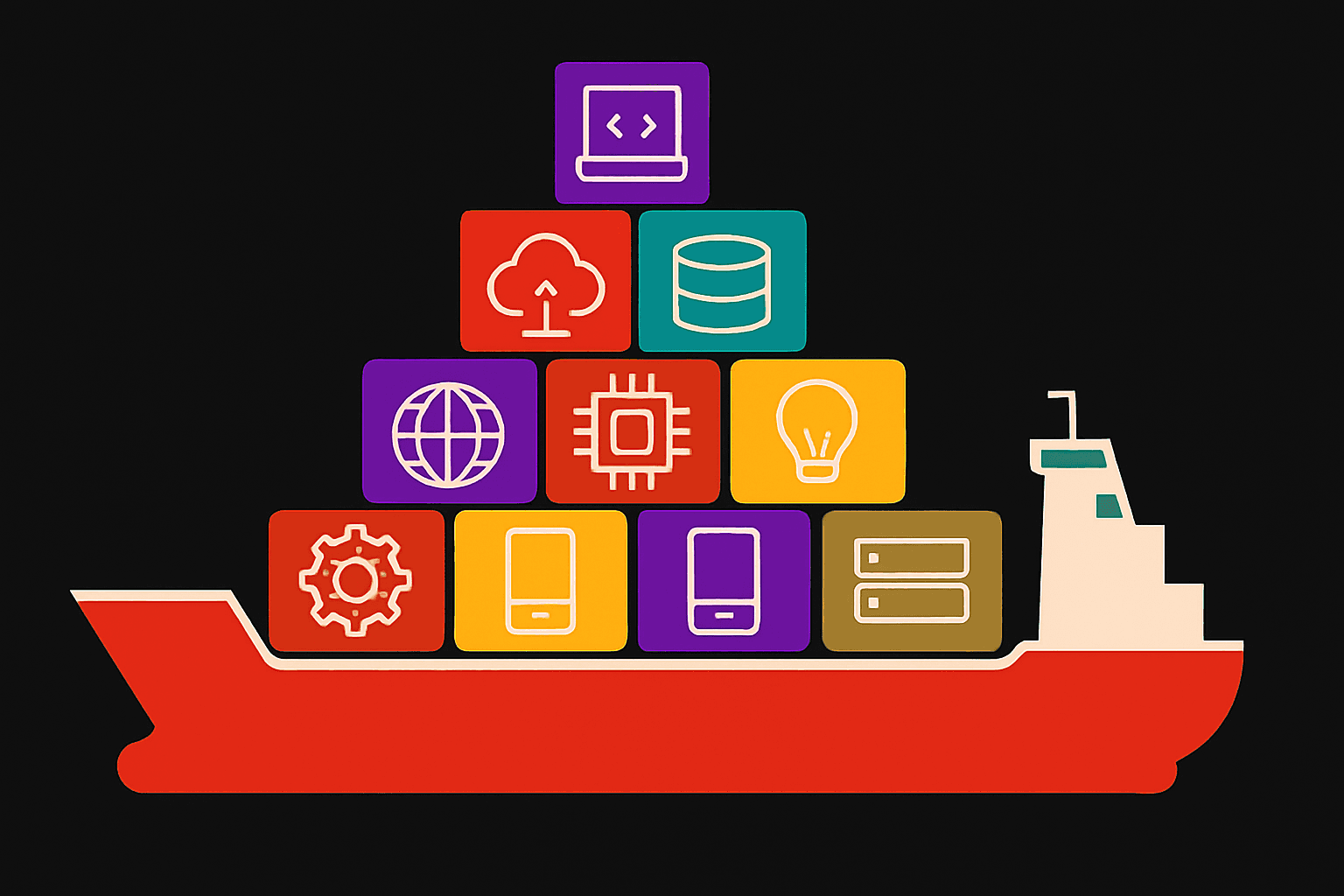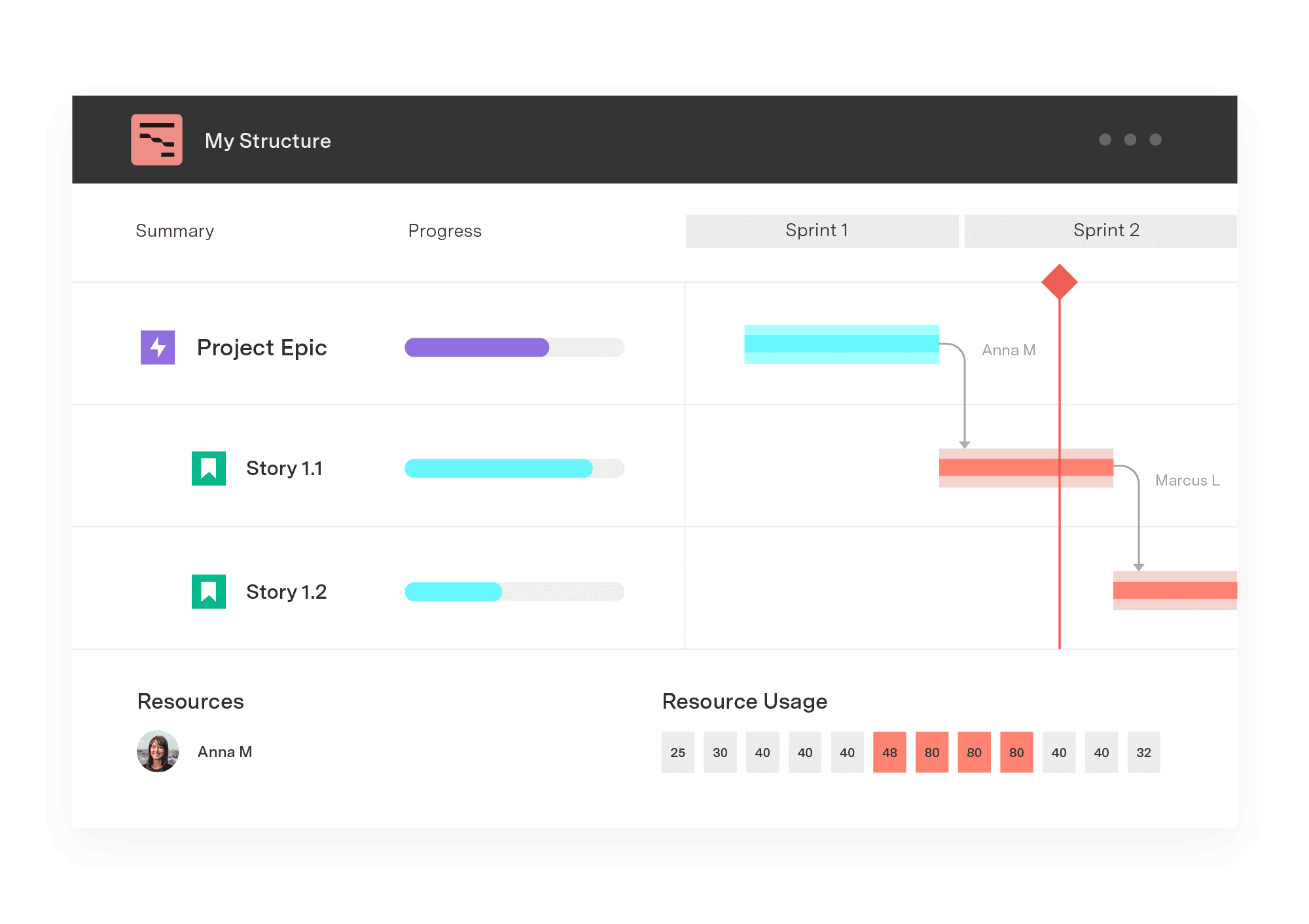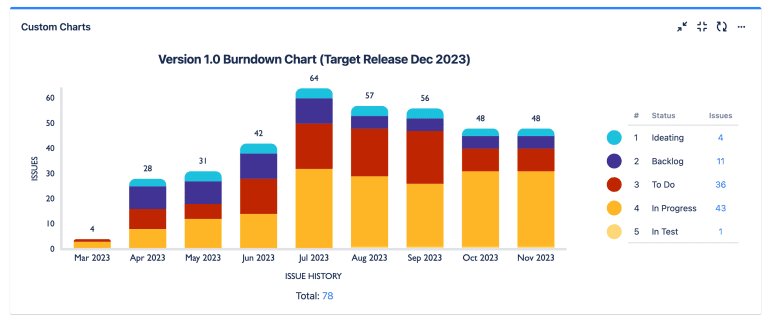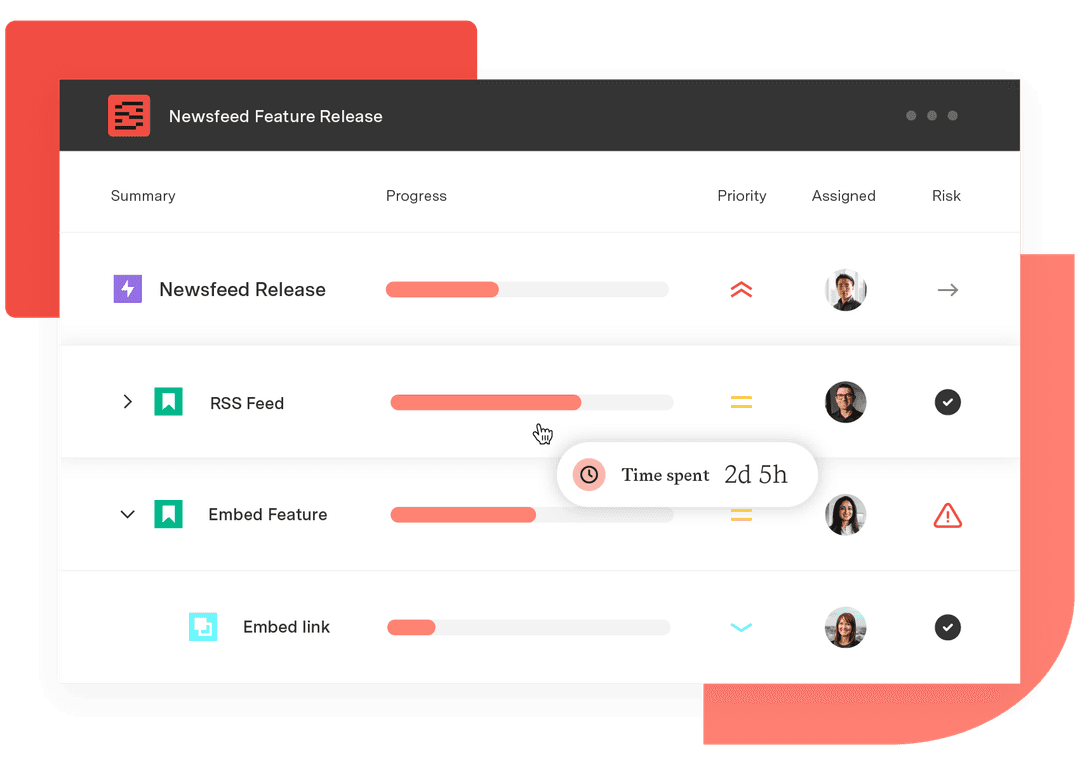Scaling success across multiple projects in a program
Tempo Team
Shifting from project delivery to program management is a big shift. And it's essential when the business climate is ever-changing.
Your engineering team just delivered its API on schedule. Marketing launched their campaign on time. The design team finished user testing ahead of deadline. Yet somehow, your customer experience initiative is three months behind and stakeholders are asking hard questions.
This scenario happens more often than we'd like to admit. Individual projects can appear successful while the larger program fails to deliver its intended outcomes. The problem isn't poor project management – it's applying project thinking to program challenges.
When project success doesn't equal program success
Project management focuses on delivering specific outputs within defined constraints. It works well for discrete deliverables with clear boundaries. But today's business initiatives rarely exist in isolation. They involve multiple teams, shared resources, and complex interdependencies.
"Project management is like juggling three balls: time, cost, and quality. Program management is like a troupe of circus performers standing in a circle, each juggling three balls and swapping balls from time to time." - Geoff Reiss
When these interconnected efforts are managed as separate projects, you lose sight of the bigger picture. Dependencies become invisible until they cause problems. Resource conflicts emerge at the worst possible moments. Stakeholders receive fragmented updates that don't reflect overall program health.
The shift to program management changes your entire approach. Instead of optimizing individual project outcomes, you coordinate related work toward shared program goals. You see the connections between projects. You manage dependencies proactively. You balance resources across the entire program portfolio.
Ultimately, individuals deliver more than projects: They contribute to initiatives that help the organization meet its overall goals.

Why it's crucial to avoid project tunnel vision
Project-focused approaches create several blind spots that compound at scale. These issues often remain invisible until they threaten program delivery.
Dependency delays cascade without warning. When the mobile team delays their API specifications, they might not realize they've just compromised the web team's sprint, the QA team's testing schedule, and the marketing team's launch timeline. By the time these impacts become visible, your options for recovery are limited.
Resource overcommitment leads to quality problems. Teams might commit to aggressive timelines based on their project workload alone, without considering their obligations to other programs. This creates a house of cards where one missed deadline triggers failures across multiple initiatives.
Inconsistent reporting obscures program health. When every team uses different status formats and progress metrics, program leaders spend more time interpreting updates than making decisions. Critical risks get buried in conflicting reports.
Stakeholder alignment becomes impossible. Without unified program visibility, executives receive contradictory signals about progress and priorities. This erodes confidence and can lead to micromanagement that slows delivery even further.
Five capabilities that transform program delivery
Successful program management requires capabilities that go beyond traditional project tracking. These work together to create coordination, visibility, and adaptability across multiple projects.
See the whole picture with program roll-ups
Program visibility starts with consolidated views that show how individual projects contribute to larger outcomes. Instead of tracking dozens of separate project schedules, you group related work under common initiatives.
This approach reveals patterns that individual project views miss entirely. You can spot when delays in one area will impact deliverables across the program. You can identify resource conflicts before they cause problems. You can communicate progress in terms of program outcomes rather than individual task completion.
Tempo Structure Advanced provides program-level visibility through comprehensive roll-ups and cross-team roadmaps. Instead of chasing status updates from multiple teams, you see the complete picture in real time.
Control dependencies before they control you
Dependencies determine program success or failure. One missed milestone makes an impact far beyond a single deliverable – it creates ripple effects across interconnected teams.
The key is making dependencies visible and manageable. Visual tools like Gantt charts show exactly how delays propagate through the program. Milestone tracking ensures critical handoffs stay accountable. Baseline protection helps you measure scope creep against original commitments.

Structure Advanced's Gantt functionality excels at visualizing these complex dependency networks. You can see potential bottlenecks before they materialize and take corrective action while options still exist.
Balance capacity across your program portfolio
Here's a common scenario: your project schedules show green status across the board, but teams are burning out from overcommitment. Traditional project tracking focuses on when work should be done, not whether teams actually have capacity to do it.
Effective capacity management requires comparing demand against availability in real time. This means understanding productive time after accounting for meetings, support tasks, planned vacations, and unexpected firefighting.
Tempo Capacity Planner enables demand versus availability analysis across your entire program. You can identify capacity conflicts early and rebalance workloads before they impact delivery.
Build consistency without killing flexibility
Inconsistent structures and processes create chaos at scale. When every team uses different field definitions, workflow states, and reporting formats, program coordination becomes nearly impossible.
The solution is establishing shared foundations that support coordination while allowing necessary variations. This might mean standardizing key fields and permissions while letting teams customize their internal processes.
Structure PPM's shared structures and permissions support flexible standardization. Teams can work in ways that suit their needs while driving consistent program-level visibility.
Keep stakeholders aligned without constant meetings
Nothing kills program momentum like endless status meetings. Yet stakeholders need timely updates to make informed decisions and maintain confidence in delivery.
Automated reporting solves this challenge. When status, risks, and KPIs update automatically, stakeholders can access current information on demand without interrupting teams. Different dashboard views serve different audiences – executives see strategic progress while team leads focus on tactical issues.
Custom Charts for Jira enables sophisticated stakeholder communication through real-time dashboards and scheduled reports. Teams can focus on delivery while stakeholders stay informed.

Making the shift to program thinking
The transition from project to program management requires a different mindset and better processes. You need to think in terms of outcomes rather than outputs, coordination rather than control, and adaptation rather than adherence to plans.
Start by identifying your current programs and the projects that contribute to them. Look for natural groupings based on shared goals, interdependent deliverables, or common stakeholders. These become your program boundaries.
Next, establish visibility across each program. You need to see how individual projects connect and contribute to larger outcomes. This visibility reveals dependencies, resource conflicts, and coordination opportunities that weren't visible before.
Then focus on the dependencies that matter most. Not every connection between projects needs active management, but critical handoffs and shared resources do. Make these visible and trackable.
Finally, create feedback loops that help you adapt when conditions change. Programs succeed not by executing perfect plans, but by detecting and responding to problems before they become crises.
Program management as competitive advantage
Organizations that master program management gain significant competitive advantages. They deliver complex initiatives more reliably. They adapt to changing conditions more quickly. They use resources more efficiently.
Most importantly, they build stakeholder confidence by delivering on their commitments. When programs succeed consistently, organizations can take on more ambitious initiatives and achieve more meaningful outcomes.
The shift from project thinking to program outcomes is about building organizational capabilities that turn complexity into competitive advantage.
Tempo's Program Collection – including Structure Advanced, Capacity Planner, and Custom Charts for Jira – provides the foundation for this transformation. When you can see the whole picture, control dependencies, balance capacity, maintain consistency, and keep stakeholders aligned, you're achieving program-wide success.
“Tempo’s Program Collection provides a single source of truth that gets teams aligned and reduces complexity. It’s a game changer to have hierarchy views, formulas, and automations that connect every moving part." – Paulo Bonamigo, Sales Manager at e-Core
Organize and manage complex programs with clear, consolidated views.
See the Program Collection











































